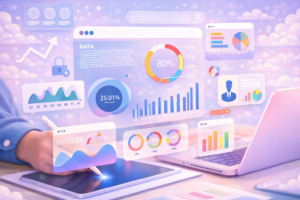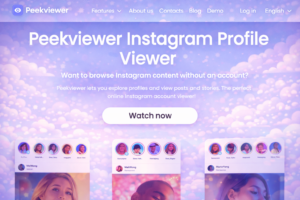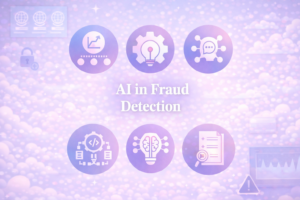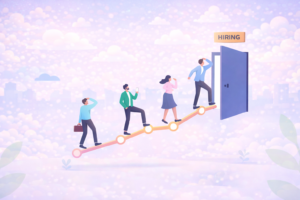The digital workplace is about to feel less like a collection of apps and more like a living system that understands context, adapts to intent, and removes friction before it slows anyone down.
Over the next five years, advances in AI, identity, and experience design will quietly dissolve today’s busywork, while new operating models will make hybrid work finally work.
Below are seven predictions for what the 2030 workplace will look like, and what leaders utilizing digital workplace services can do now to be ready.
1) AI copilots become standard issue, shifting from helpful tools to accountable teammates
By 2030, “open the copilot” will sound as ordinary as “open email.”
Copilots will live inside every core workflow (finance, HR, sales, operations) and will move beyond autocomplete and chat.
They will reason across systems, initiate actions with guardrails, and explain decisions in plain language. The most visible shift won’t be productivity alone; it will be accountability.
Copilots will keep auditable memories of why they recommended an action, what data they used, and who approved the final step.
What changes in practice:
- Employees will delegate multi-step tasks (“prepare the Q3 variance narrative and route it for sign-off”), and copilots will orchestrate the process, not just draft outputs.
- “Right to explanation” becomes table stakes: copilots surface evidence, data lineage, and risk scores for every recommendation.
- Leaders will measure copilot performance like a team member (precision, recall, cycle time, and business impact) rather than just adoption rates.
Leadership takeaway: treat copilots as part of organizational design, not just software. Define what they can decide alone, what they can propose, and what always needs human approval.
Align incentives so teams benefit when the copilot gets better.
2) Interfaces turn ambient and multimodal: work finds you, not the other way around
The dominant UI shifts from document-centric to intent-centric. Voice, text, touch, and camera work together without feeling like separate modes.
Instead of hunting through tabs, employees state an outcome, and the system assembles the right data and tools for that moment.
Subtle notifications nudge a task forward when the system detects a window of attention; when focus deepens, interruptions fall away by design.
What changes in practice:
- Meeting follow-ups show up as pre-filled tasks the moment a decision happens, with owners and deadlines already set.
- Field and frontline roles gain parity: hands-busy tasks (maintenance, inspections, patient intake) run through voice and computer vision safely and reliably.
- Accessibility improves by default; the same multimodal stack that helps power users also helps neurodiverse and differently abled employees thrive.
Leadership takeaway: invest in a design system that treats voice, text, and vision as first-class inputs and commits to accessibility as a product requirement, not an accommodation.
3) Work orchestration moves from scripts to agents. Automation that adapts when reality changes
Automation today often looks like brittle flows glued together by APIs. By 2030, task-level bots give way to goal-driven agents that plan, execute, and adapt.
These agents will negotiate handoffs, recover from errors, and escalate with context when a human is needed.
The net effect: the cost of complexity drops.
The same orchestration layer coordinates SaaS, legacy systems, and data lakes without demanding every edge case be hard-coded.
What changes in practice:
- “Exception work” becomes the new normal work. Agents propose the next best step when data is missing or rules conflict, instead of failing silently.
- Compliance improves because agents embed policy as code. Every action carries a reason, a reference to the rule, and a changelog.
- Shadow IT shrinks. When the official platform is the fastest path to automation, teams stop building one-off tools in the dark.
Leadership takeaway: standardize on an agent platform that isolates identity, policy, and observability from the business logic. You’ll get adaptability without losing control.
4) Skills become dynamic assets: talent marketplaces go from experimental to essential
Job descriptions will matter less than problem descriptions. Work breaks into missions, and internal talent marketplaces match missions to skills, verified by outcomes, not resumes.
AI career copilots guide employees on the shortest path from current skills to missions the business needs, recommending projects, mentors, and learning that actually move the needle.
What changes in practice:
- Career paths feel like maps, not ladders. Employees see how to convert existing strengths into adjacent roles with measurable steps.
- Learning plugs into real work. Courses and credentials unlock only when tied to a mission; completion yields immediate, on-the-job application.
- Attrition risk drops when people can change teams without changing companies. The marketplace surfaces opportunities faster than recruiters can.
Leadership takeaway: treat internal mobility as a strategic lever. Fund the marketplace like a product and make managers accountable for both delivering outcomes and growing people through missions.
5) Security and privacy become “zero trust, zero guess”. Strong protection with less friction
By 2030, identity becomes the primary perimeter. Devices, users, and services continuously attest to who they are and what state they’re in.
Access decisions weigh sensitivity, behavior, and context in real time.
Confidential computing and policy-aware data layers become commonplace, so AI can learn from sensitive information without exposing it.
The experience gets easier because the system knows enough to trust without repeatedly asking.
What changes in practice:
- Passwords and ad hoc MFA prompts fade away. Risk-based, continuous authentication happens beneath the surface, surfacing only when something looks wrong.
- Data protection follows the data, not the network. Permissions and retention policies travel with content across apps and devices.
- Model governance is built in. From fine-tuning to inference, sensitive data leaves an auditable trail, and automated red-teaming becomes routine.
Leadership takeaway: reframe security as an experience problem. The safest system is the one people naturally use because it is the smoothest path to getting work done.
6) Meetings shrink, decisions travel: async-first becomes the default operating rhythm
The meeting-heavy habits of the 2020s give way to decision-centric workflows. Summaries, action items, and owners generate automatically; discussion shifts to structured threads where proposals evolve transparently.
When synchronous time is needed, it’s short, well-prepared, and ends with decisions logged for downstream systems.
Performance reviews no longer rely on memory; contribution data lives in the work graph.
What changes in practice:
- “Record, summarize, decide” replaces “meet, discuss, punt.” Decisions travel with the artifacts they affect: roadmaps, forecasts, contracts.
- Knowledge search stops being a scavenger hunt. Employees query the work graph (“show comparable decisions and outcomes from last year”) and get answers with sources.
- Focus time becomes a scheduled, protected resource. The system forecasts load and guards capacity for deep work.
Leadership takeaway: redesign management rituals for async-first. Weekly updates become structured briefs; status meetings become dashboards; live sessions focus on decisions and tradeoffs.
7) Sustainability and cost discipline converge. “Green by default” becomes good business
Power-hungry models and sprawling device fleets create pressure to do more with less. By 2030, sustainability targets and cost optimization reinforce each other.
Workloads schedule intelligently to match carbon-aware windows; device lifecycles stretch through modular upgrades and predictive maintenance; and “AI power budgets” become standard, aligning model choices with business value.
What changes in practice:
- Procurement evaluates TCO plus energy impact as a single metric. Vendors compete on efficiency, not just features.
- Edge and cloud cooperate. Inference runs where it’s cheapest and greenest at that moment, without user-visible latency.
- Teams see the impact of their choices. Dashboards translate energy and spend into business terms: per customer served, per shipment delivered, per claim resolved.
Leadership takeaway: make efficiency visible. When teams see the real cost of a heavy model versus a lighter one (and the minimal difference in outcomes), smarter choices follow.
A day-in-the-life snapshot (2030)
Morning begins with a quiet tap: your copilot has already triaged overnight messages, flagged a supplier risk that needs attention, and drafted the updated mitigation plan.
You ask for a rationale; it cites data, model confidence, and a two-paragraph summary of similar past incidents and their outcomes. You greenlight a set of actions with a single approval.
Later, a product decision looms. Instead of a 60-minute call, your team reviews an auto-generated brief: options, tradeoffs, expected ROI, and stakeholder comments, all in one place.
You add a question; the system answers by pulling from previous decisions and postmortems. A 15-minute sync finalizes the choice, and the work graph updates roadmaps, budgets, and communications in seconds.
In the afternoon, an engineer pivots to a mission outside her usual role.
The internal marketplace matched her skills to a time-sensitive initiative; her copilot lays out a micro-learning path tailored to the specific tasks.
She contributes value on day one and earns verifiable credit toward her next career step.
Security is silent throughout. Access follows intent and context. Sensitive data is masked when not strictly necessary.
Everything is logged, explainable, and auditable, without ever feeling in the way.
From predictions to practice: what to do now
Here’s a pragmatic short list to start moving toward a 2030-ready workplace without boiling the ocean:
- Adopt an AI governance blueprint that defines decision rights for copilots and agents: what they can do autonomously, what requires review, and how to measure their performance.
- Build a unified work graph across your core systems (content, identity, tasks, decisions) to power explainability, search, and automation.
- Standardize your multimodal design system so voice, text, and vision work consistently across devices and roles, with accessibility built in.
- Pilot an internal talent marketplace tied to real missions, not just training. Measure time-to-contribution and retention uplift.
- Shift security to identity-first with continuous risk evaluation, confidential computing for sensitive workloads, and policy that travels with data.
- Make async-first a management norm by replacing status meetings with structured briefs and capturing decisions as first-class artifacts.
- Track efficiency as a product metric. Treat energy consumption and run cost per outcome as KPIs alongside speed and quality.
(Keep it to one or two initiatives per quarter; sequence matters more than speed.)
The leadership stance that wins the decade
Technology alone won’t deliver the 2030 workplace. The organizations that pull ahead will treat AI, identity, and experience as a coherent system anchored in human outcomes.
Working together with trusted digital consultancies, they will define how decisions get made, how work moves, and how people grow, then let technology express those choices with clarity and control.
The payoff is simple and significant: less friction, faster cycles, tighter alignment, and work that finally feels as capable as the people doing it.
The digital workplace of 2030 won’t just be smarter; it will be more humane: clearer, calmer, and designed around outcomes that matter.








